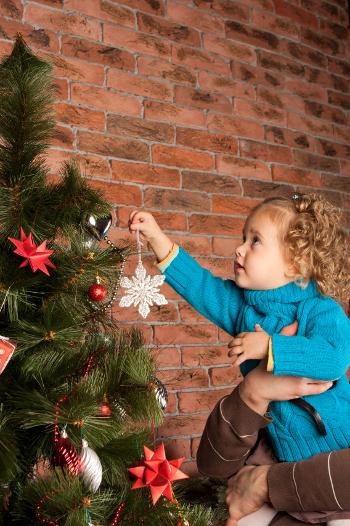Decorating the Christmas tree
Duration/age

The Christmas pageant has been and gone, Father Christmas has arrived and it is time to decorate the Christmas tree.
What kind of Christmas tree will your family have? Will it be a real pine tree that you buy from a special place or a branch from a gum tree? Does your family have an artificial one that you take down and put up every year? Do you have an inside Christmas tree or one that you decorate outside?
It’s the first Saturday in December. It is time to put up the Christmas tree.
Does your family have special traditions for putting up and decorating the tree or does it change every year. Do you always put the tree in the same place or is it different depending on how big the tree is?
We will have to make gingerbread hearts to hang on the tree. We can hang them on the tree when we decorate it on Christmas eve.
This year we are going to make a tree from sticks. It won’t be as tall as last year’s tree so we can put it on the table in the hall.
Talk to your child about the different decorations you will use. Do you use the same ones every year or buy new ones to match a new colour scheme? You could make your own decorations to hang on the tree. Some people like to have a different theme for their tree every year.
Let’s have a peace theme this year. We can make peace doves and write messages of hope to hang on the tree.
We will need to buy new lights to put on the tree as the ones from last year are broken. We need to put the lights on first and then the other decorations afterwards.
Materials you will need
- A Christmas tree
- Decorations
- Lights
Alternative tools
- Sticks
- Lollies
- Branches
- A plant in a pot
- Homemade biscuits
Skills this activity improves
Why does this matter?
When your child helps you to decorate the tree they are learning to notice similarities and differences in objects and to use language to describe how these things are different. This is the beginning of sorting, grouping and classification.
As they listen to you talk they will be hearing and responding to mathematical language that involves, measurement, colour, position and location.
Learning to listen to what is being said, waiting for the speaker to finish before responding and then answering what has been asked is the beginning of developing friendship skills.
What does this lead to?
Holding a conversation with an adult helps children to develop language and social skills. When a child is able to practice talking with an adult they are learning to read the other person’s body language, to wait for a pause in the conversation before responding and to expand their questioning skills.
Sorting, categorising and grouping the decorations will help your child to develop visual discrimination skills. Visual discrimination skills are important when children are learning to read and write. If a child is not able to notice small differences in objects that look similar, they will find it hard to notice the difference between letters that look the same.
Language to use
- Top, bottom, middle, front, back
- Same, different
- Big, small, medium
- Long, thin, narrow, short, fat,
- Curved, straight , wavy, bumpy, smooth
- Shiny, sparkly, glitter
- Tinsel, bauble, ribbon, decoration, lights
- Sitting, hanging, dangling, nestled, attached
Questions to use
- What colour ball will we hang on the tree first?
- What will we put on the top of the tree?
- Are all the baubles the same size?
- Which decorations do you like the best?
- Will we put the same decorations on the tree outside as the one inside?
- Why don’t we turn the tree lights on during the day?
Useful tips
- You can google different ideas for decorating the tree.
- Borrow books from the library for different decorating ideas.
- If not everyone in the family agrees on the best way to decorate the tree, each family member could have their own small tree.
- Younger children might not be able to help with hanging objects on the tree but can help with threading and making decorations.
- Remember to talk to your child in your home language.
More ideas
- You could try and make Christmas biscuits to hang on the tree.
- Thread different coloured objects onto string to hang on the tree.
- Make paper chains to hang on the tree. Your child’s old paintings can make great paper chains.
Variation by age
Three to five year olds
- Create your own decorations to hang on the tree.
- Get your child to help you sort the decorations into piles that are the same colour, size or shape.
- Play I-spy with the decorations and see if your child can find the decoration you are describing.
- Make your own stars to hang on the tree. You could draw them, make stars from sticks or cut them out from wrapping paper.
- Make your own baubles from ping-pong balls.
Questions to ask
- Can you find all the small gold balls?
- Which colour should we put on the tree first?
- Should we start decorating the tree up the top or down at the bottom?
- How many points does the star have? Are they all the same?
Language to use
- Top, bottom, middle, front, back
- Same, different
- Big, small, medium
- Long, thin, narrow, short, fat
- Curved, straight, wavy, bumpy, smooth
- Shiny, sparkly, glitter


